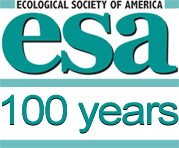Publications
Communicating Research
Scientists around the world publish their research in ecology and environmental science in ESA’s scientific, peer-reviewed journals: Frontiers in Ecology and the Environment, Ecology, Ecological Monographs, Ecological Applications, Ecosphere, and Ecosystem Health and Sustainability. ESA’s publication The Bulletin continues to provide interesting items and updates about ecological science for members.
This year, ESA and the Ecological Society of China (ESC) launched ESA’s newest journal, Ecosystem Health and Sustainability which seeks to highlight ecological research taking place in regions of rapid economic growth and industrialization around the world. Frontiers debuted the series Natural History Notes in 2015. Each open access article showcases the natural history of particular organisms – their morphology or behavior, their habitats, or their roles in food webs and ecosystems.
Recognizing the importance of strengthening its publishing program, in 2015, ESA selected John Wiley & Sons as a publishing partner for its family of journals. This partnership provides additional capabilities and expertise to ESA’s publications strategy, processes, and global reach, along with greater ease of use and discovery by authors, editors, and readers.
ESA Journal Ranking and Impact Factors
“Ecology” category (out of 145 journal titles)
6 Frontiers in Ecology and the Environment (7.441)
8 Ecological Monographs (6.980)
17 Ecology (4.656)
23 Ecological Applications (4.093)
64 Ecosphere (2.255)
“Environmental Science” category (out of 223 journals)
5 Frontiers in Ecology and the Environment (7.441)
19 Ecological Applications (4.093)
Centennial Publications
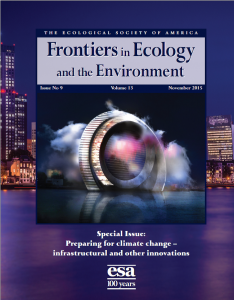 In honor of the Centennial, ESA journals undertook two major efforts—one forward-looking and the other an historical look back at some of the most notable papers published in ESA journals, since Ecology first rolled out the presses in 1920. (Ecology, Ecological Applications, Ecological Monographs and Ecosphere and Frontiers) Metrics of citations and downloads were gathered to highlight some of the articles of the past from each journal that had the greatest impact. Commentaries reflecting on various papers, by present and past editors, as well as some other ESA members, were published alongside the listed articles.
In honor of the Centennial, ESA journals undertook two major efforts—one forward-looking and the other an historical look back at some of the most notable papers published in ESA journals, since Ecology first rolled out the presses in 1920. (Ecology, Ecological Applications, Ecological Monographs and Ecosphere and Frontiers) Metrics of citations and downloads were gathered to highlight some of the articles of the past from each journal that had the greatest impact. Commentaries reflecting on various papers, by present and past editors, as well as some other ESA members, were published alongside the listed articles.
In November, Frontiers in Ecology and the Environment published a Special Issue looking at the big infrastructural and other innovations currently being built and tested to mitigate the future effects of climate change, including sea level rise, drought, urban heat island effects, and more. The Bulletin published a series of articles reflecting back on the developments and people in the science of ecology over the past 100 years.
Our other journals (Ecology, Ecological Applications, Ecological Monographs and Ecosphere and Frontiers) published several ESA Centennial Papers during 2015, which had been invited by the Editors-in-Chief. These papers addressed areas of study expected to have exceptional interest in the coming years, and were subject to ESA’s usual peer-reviewed standards.
In the News and Social
“The risk of getting attacked by a shark off California has plummeted sharply since 1950, study says.” Chelsey Harvey, The Washington Post 9 July 2015.
A new study, scheduled to publish Friday in the journal Frontiers in Ecology and the Environment, delivers this surprising news: A human’s individual risk of being attacked by a great white shark — the same species made famous by Jaws — off the coast of California has actually decreased by more than 90 percent since the 1950s.
Ferretti et al.’s ESA Frontiers article, released to journalists ahead of press for Shark Week, garnered attention in many news outlets including the New York Times, the LA Times, and (a rather excellent story in) Surfing Magazine.
“40% decline in polar bears in Alaska, western Canada heightens concern.” Michael Muskal, LA Times, 21 November 2014.
“Land-based foods won’t float polar bears through ice declines.” Sarah Gilman, High Country News, 1 April 2015.
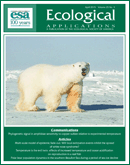
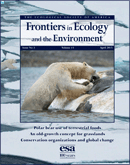
Both Ecological Applications and ESA Frontiers featured polar bear cover stories by Steven Armstrup in April 2015 (The Applications paper was released as a preprint on 17 Nov 2014) that drew coverage from a broad selection of news outlets. “Polar bear population dynamics in the southern Beaufort Sea during a period of sea ice decline,” in Ecological Applications, was picked up by the AP’s wire service and reprinted in newspapers across the country.
In March 2015, the ESA and the Ecological Society of China launched a new, interdisciplinary, open access journal focused on Ecosystem Health and Sustainability. An NCEAS-funded paper on ocean tipping points has been one of the new journal’s most accessed and talked about articles.

Principles for managing marine ecosystems prone to tipping points. Selko, @TimEssington Esteshttp://t.co/FeqLxBNcTS pic.twitter.com/sKfzbZWALp
— Trevor A. Branch (@TrevorABranch) July 21, 2015
(follow the link to see news coverage and tweets)

Neil Hammerschlag.
Hammerschlag, N., et al. (2015), Evaluating the landscape of fear between apex predatory sharks and mobile sea turtles across a large dynamic seascape. Ecology, 96: 2117–2126. doi:10.1890/14-2113.1
“Forest fires threaten new fallout from Chernobyl.” Rachel Nuwer, New York Times, 6 April 2015.
![]()
According to their analysis, published in Ecological Monographs, wildfires that broke out in the exclusion zone in 2002, 2008 and 2010 have cumulatively redistributed an estimated 8 percent of the original amount of cesium-137 released in the 1986 disaster.
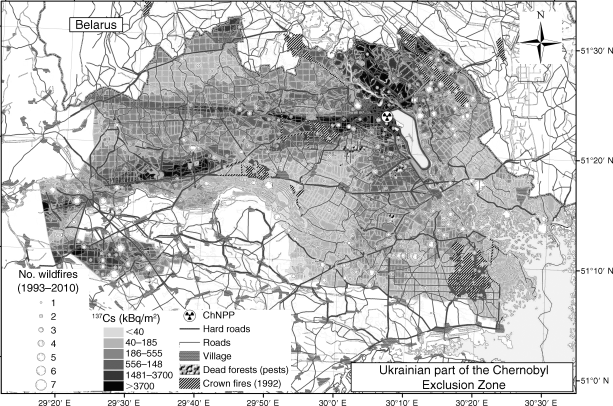
Figure 13. Wildfire history in the Chernobyl Exclusion Zone (CEZ). Evangeliou, N.et al. (2015), Fire evolution in the radioactive forests of Ukraine and Belarus: future risks for the population and the environment. Ecological Monographs, 85: 49–72. doi: 10.1890/14-1227.1
“Blooming algae may be changing lakes for the worse—and possibly forever.” Ron Meador, MinnPost, 15 January 2015.

The study is the work of a team led by Kathryn Cottingham, a biologist at Dartmouth College, with backing from the National Science Foundation. It was published last Thursday in Ecosphere, an online journal of the Ecological Society of America.
By combining observations made at lakes in New England with reviews of databases on other lakes, the paper challenges the notion that cyanobacteria blooms are simply a response to fresh inputs of phosphorus in fertilizer runoff, even if aggravated by the slight but steady increases in water temperature associated with warming climate regimes.

Fig.2 Schematic of N and P fluxes in oligotrophic and eutrophic lakes examined in the model from Kathryn L. Cottingham, et al (2015). Cyanobacteria as biological drivers of lake nitrogen and phosphorus cycling. Ecosphere 6:art1. DOI: 10.1890/ES14-00174.1.
Publications Staff (August 2014-August 2015)
ESA closed its Ithaca Publication Office in November of 2015 and thanks and appreciates the dedicated staff listed below who have worked to ensure the publication of ESA journals. As of December 2015, ESA has four Peer Review Specialists, Jane Bain, Heather Carlo, Ellen Cotter, and Anne Marie Whelan, who will continue to assist the Editors in Chief’s with the peer review process for our journals.The Associate Director for Publishing, Steve Sayre, joined ESA in January 2016.The Frontier’s office remains in operation in the Washington, DC.
Frontiers in Ecology and the Environment Staff
Editor in Chief: Sue Silver
Assistant Editor: Peter Mooreside
Editorial Assistant: Patrick Monahan
Marketing & Advertising Manager: Eric Gordon, Eunice Cho
Ithaca Publications Office (closed in 2015)
Interim Assoc. Manager & Graphics Editor: Regina Przygocki
Associate Managing Editor: David Gooding
Associate Managing Editor/Ecosphere: Ellen Cotter
Associate Data Editor: Jane L. Bain
Technical Editor: Margaret Shepard
Associate Technical Editor: Gail Blake
Production Editor: Barry Miller
Office Manager: Jane Shaw
Publications Coordinator: Anne Marie Whelan
Editorial Assistant: Heather Carlo
Production Assistant: Clare Ulrich
Copy Editor: Rachel Lodder
Copy Editor: Sarah Schneider
Office Assistant: Robert Roy
Office Assistant: K.C. Weston
Editor Emeritus: Lee Miller
